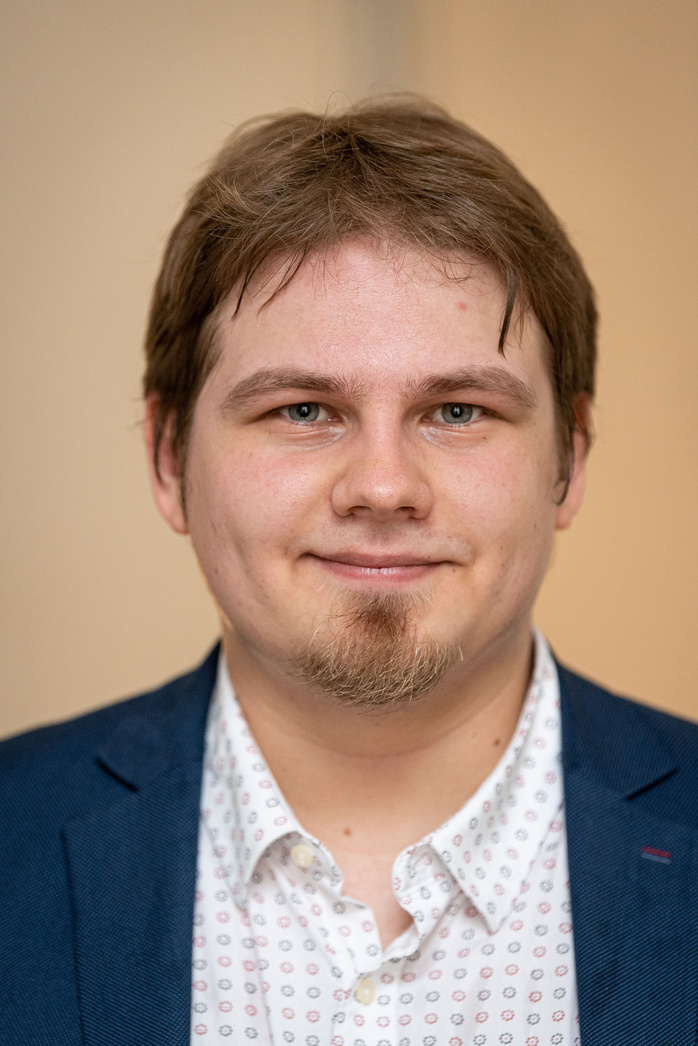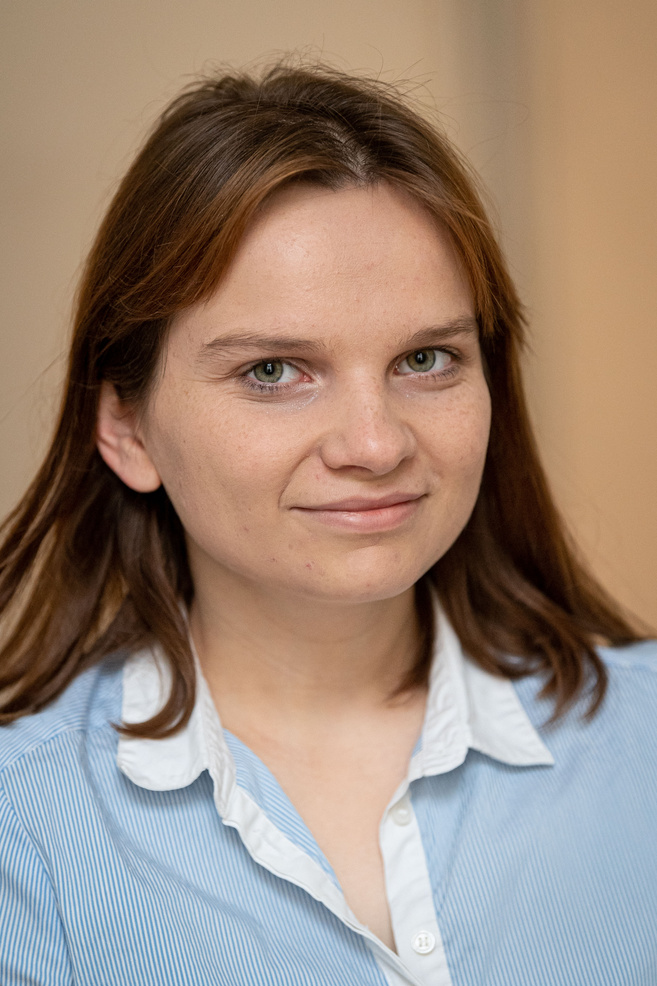

Conference 2024
AI VET
18 April
Wrocław
Discover AI basics in medical industry with our speakers!

Free ticket for UPWR
Contact us +48 603585399
Email - marta.facon-poroszewska@upwr.edu.pl
mgr inż. Cyprian Mataczyński
Wroclaw University of Science and Technology
BrainLab Group
Proffesional background

Cyprian Mataczynski, M.Sc., a doctoral student in the Department of Technical Informatics at Wroclaw University of Technology. On the scientific side, he is involved in the application of deep learning to irregular time series, in particular monitoring of cerebral hemodynamics.
Contractor in NCN-funded projects on the analysis of intracranial pressure morphology and the relationship between the autonomic nervous system and cerebral autoregulation.
9.15 - 10.15
What is AI? Introduction
Dynamically changing technology has become a sign of our times. We are bombarded with information about new technological trends from all sides, and the adaptation of new technologies is the fastest in years. With advances in the field of artificial intelligence, the first products of this development have begun to appear on the market, causing ever faster changes. However, what is "AI" really? Is it just another buzzword that has lost its meaning being used in every possible context? Among other things, I will try to answer these questions during the lecture, where in simple words I will try to present the intuition behind modern AI, the main directions of its development, and new applications. I will also try to dispel doubts and misconceptions about modern artificial intelligence.
Proffesional background
dr inż. Agnieszka Uryga
Wroclaw University of Science and Technology
BrainLab Group
Agnieszka Uryga, PhD Eng is an assistant professor at the Department of Biomedical Engineering at Wrocław University of Science and Technology. Her scientific interests revolve around studying cerebral hemodynamics and cerebral autoregulation processes using digital signal processing methods and machine learning algorithms.
She is currently leading a project funded by the National Science Centre called SONATA "AUTOMATIC: Analysis of the relationship between the autonomic nervous system and cerebral autoregulation using machine learning methods".
She collaborates with renowned scientific institutions worldwide, including the Brain Physics Laboratory at the University of Cambridge. A scholarship recipient of the Foundation for Polish Science. Lecturer on statistics and data analysis methods in biology and medicine.

"To domesticate models" - gentle introduction to basic concepts in machine learning
10.30 -11.30
How to build the simplest model with one explanatory variable? What if my outcome variable is binary rather than continuous? Is there a way to group features describing a dataset to observe their relationship? I've heard something about decision trees... In the combined lecture and workshops, we'll demystify regression and random forest. We'll see examples of preparing a 'beeswarm' plot to visualize the most significant features in a predictive model. To fully participate in the meeting, it's recommended to bring your own laptop."

ATTENTION PLEASE! PRACTICE ahead - take Your laptop

11.50 - 12.20
Coffee Break
Proffesional background
W. Nagarajan Shunmugan
Veterinary Information Network
Student UPWR
I am Nagarajan Shunmugan and I am 28 years old. I have a unique profile to start with, I have an engineering background, I have a bachelors in Electronics engineering specialising in clinical wearables, 3D-printing, and Robotics with research experiences in Clinical wearables and Self-driving cars and obtained a Dual Masters graduate from, Tu Berlin, Germany & KTH Royal Institute of Technology, Stockholm, Sweden majored in Artificial Intelligence and Robotics.
With a strong passion for animals and their healthcare, I decided to pursue veterinary medicine full-time and carry my AI & engineering skills with me and started my journey in Poland. I am a full-time veterinary medicine student (3rd year) in Wroclaw, Poland. During my veterinary medicine study, I worked as an Assistant lecturer at Coventry University (a UK-based university branch in Wroclaw, Poland - part-time) teaching AI, IOT and software programming in general.
Currently, I am working as a lead AI developer for a California-based famous veterinary platform (VIN – Veterinary Information Network) and Leibniz Institute for Zoo and Wildlife Research, Berlin building custom Large language models and other Computer vision applications for pets and wildlife. I have both an engineering and medical background and have worked with human medicine and veterinary medicine doctors in various capacities (start-ups and big corporations) using artificial intelligence in computer vision, pose estimation, localisation, semantic segmentation and NLP domains.

Impacts of AI in veterinary medicine and healthcare
12.30 - 13.30
“AI is one of the most profound things we’re working on as humanity. It’s more profound than fire or electricity,” Alphabet Inc. CEO Sundar Pichai said at the World Economic Forum.
AI is disrupting every domain humans have ever created and AI has the potential to ask
questions that no human has ever thought of asking! Similarly, it is already disrupting the
trillion-dollar industry of healthcare and medicine (human and veterinary) starting from
Statistical data problems in genetics laboratories, biostatics, gene, and protein sequencing and also in areas of drug discovery, protein folding, genome research, biochemistry, and
pharmacology.
Computer vision problems like X-ray, MRI, CT, Ultrasound and Natural
Language problems in assistive healthcare. I will be talking about the brief history and various breakthroughs achieved in medicine with AI and the future of technology in the veterinary healthcare sector! I am so excited to share this information with the researchers, teachers, students and future veterinarians who will be using the technology directly or indirectly in the near future!
Med Vet, MRCVS Kornelia Omyła
UC DAVIS School of Veterinary Medicine
Proffesional background
Kornelia Omyla, veterinarian, specialist in equine diseases, graduate of the University of Life Sciences in Wrocław (2013); member of the Royal College of Veterinary Surgeons, currently a resident of the University of California at Davis in the United States.
Since 2022, a member of the team of the Clinical Hospital of the Department of Animal Reproduction and the Laboratory of Assisted Animal Reproduction Techniques at UC Davis. Member of the UC Davis "Artificial Intelligence in Veterinary Medicine" team.
Her professional passion is the care of pregnant mares, the physiology of perinatal changes, endocrinology and related behavioral changes, as well as all kinds of emergencies and emergencies. For many years she divided her work between Europe and Australia, which enabled her to manage two breeding seasons of horses per year. She gained experience working in many clinics and herds, both in the racing environment of Thoroughbred horses (Ireland, England, Australia), Purebred Arabian horses (Saudi Arabia) and half-breed horses, ponies, Polo Ponies and other noble breeds.
Originator and co-owner of the Equinity Solutions company established in 2019, focusing its research activities on the prediction of births in mares and the detection of unusual behavior in equines using artificial intelligence algorithms.

13.45 - 14.45
'Equinity Vision' – how far does the possibility of predicting parturition in mares go?
Can artificial intelligence see more than the human eye? Why do we often need support when caring for a mare in foal?
In my presentation, I would like to present one of the practical applications of artificial intelligence algorithms in the everyday practice of a veterinarian. I will also discuss several additional functionalities of the system and further directions of research.



Skontaktuj się z nami, jeśli jesteś:
NAUKOWCEM LUB STUDENTEM
WŁAŚCICIELEM FIRMY
PRELEGENTEM
lub PO PROSTU ZAINTERESOWANY TEMATEM!
Skontaktuj się +48 603585399
marta.facon-poroszewska@upwr.edu.pl

